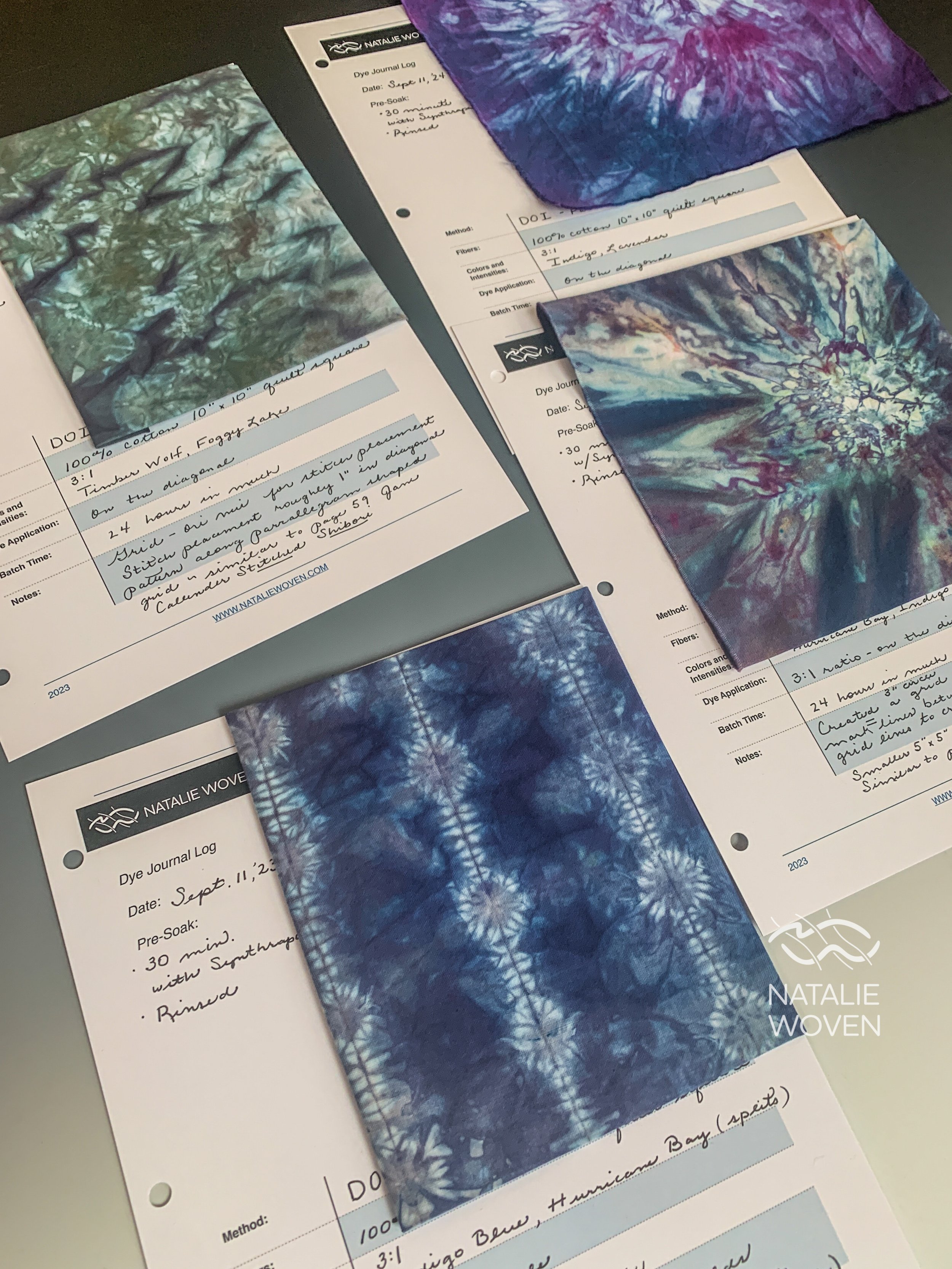Record Keeping with Ice Dyeing
I’ve just finished up with teaching a wonderful set of weavers and dyers how to build color palettes using two different methods in ice dyeing. Previous blogs have covered muck dyeing so this one focuses on rack dyeing. There are so many fiber reactive dyes and custom blends available now which allows for all kinds of color and experimentation possibilities. Muck and Rack (Gravity) dyeing can create two completely looks on yarn! It’s a lot easier to see how the colors split as well as how the dyes manifest themselves on fabric than it is on the yarn, but I can use my various ice dyed fabric samples to observe and then build a palette to dye plant based yarns - tencel, cotton, linen and more. Fiber reactive dyes also work with silk, but does not produce intense colors since silk is an animal protein.
Two fabric samples that I dyed on September 11 were used for study to create a palette. I used them to design a series of warp yarns that might look great if woven together (photo below).. Happy Cat Tie Dyes custom blends Procion fiber reactive dyes. I’ve selected Foggy Lake and Hurricane Bay from Happy Cat Tie Dye as they are reported to have a lot splits. Primary colors do not split! Indigo blue is one such example. Muck dyeing using Dye Over Ice (DOI) is an easy process and I most frequently pre-mix soda ash with dye in a 3:1 ratio. The resulting yarn appears to have an oil spill effect!
Next, I’ll plan a gravity dye using these same colors. I find it uses much less ice and an equivalent amount of dye. The resulting yarn is easily covered by the soda ash: dye powder as a result of gravity when one color appears to blend into the next. My dye application (heavy v. light) is certainly variable but I can produce quite a value difference in dyes that split by combining less dye with more soda ash. Ratios are 4 parts soda ash: 1 part dye or sometimes I will use 5:1. Here is an example of a gravity dye set up using dye under ice. A rubber baseboard is used to contain the ice (photo 1). I will also use a screen to prevent the ice from falling through the rack under the baseboard. After applying ice, a second dose of soda ash: dye color using DOI follows (photo 2). Occasionally, I will substitute a different dye color in the top layer of application. My dye plan helps me to remember how I’ve applied the dyes under the ice. I can use this diagram in my dye journal.
Weaving with ice dyed yarns is so much fun! I always like to be able to show weavers how beautiful your resulting yarns can be! Here’s what I’ve been weaving with my developed palette: Deflected Doubleweave 8 Shaft!
I’m excited to be teaching Ice Dyeing in person with the Ann Arbor Fiber Arts Guild and on zoom with San Diego Weavers in 2024! If you are want to learn more about ice dyeing, I have made my Ice Dyeing Workshop Monograph available for purchase as well as a Custom Ice Dye Journal document. The button links below take you directly to my website.





